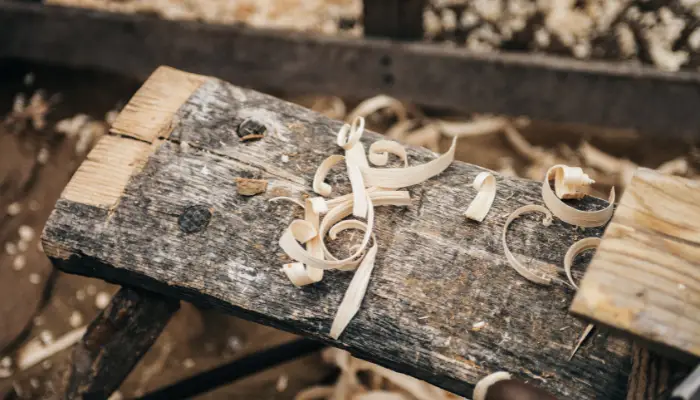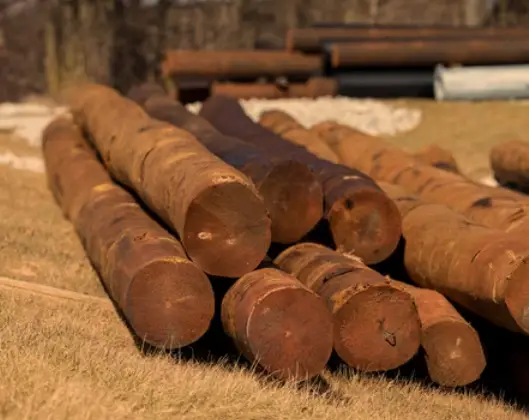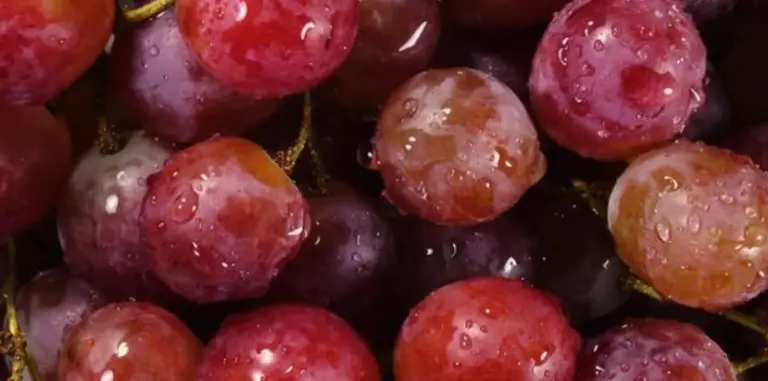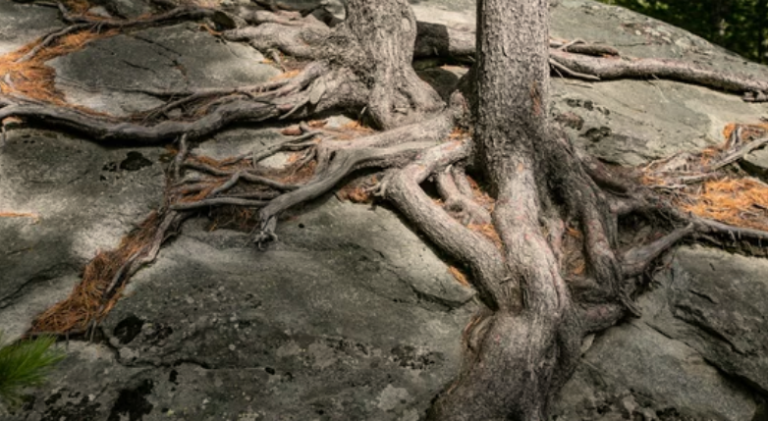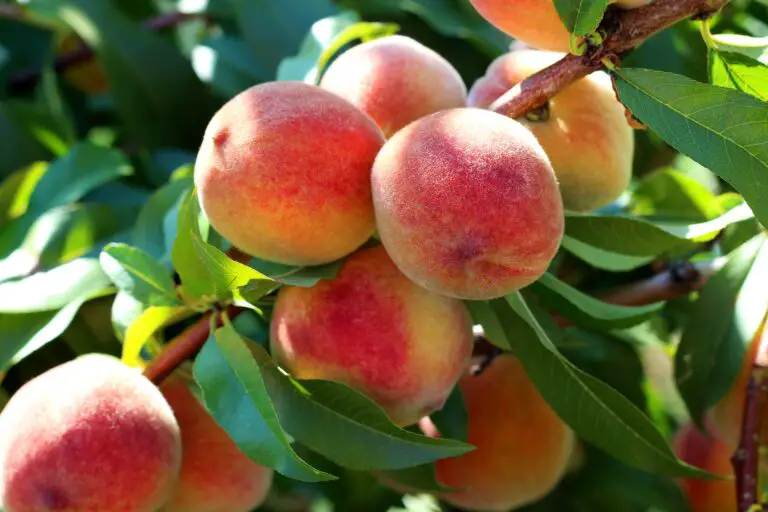Wood Shavings Uses: Beyond the Workshop
Wood Shavings Uses. Originating from the complex procedures of carpentry, woodturning, and furniture construction, these shavings are more than just the byproducts they are usually thought to be.
In this thorough post, we will go into the complex realm of wood shavings, illuminating their adaptability and the numerous uses that they have outside of the workshop.
The Basics of Wood Shavings
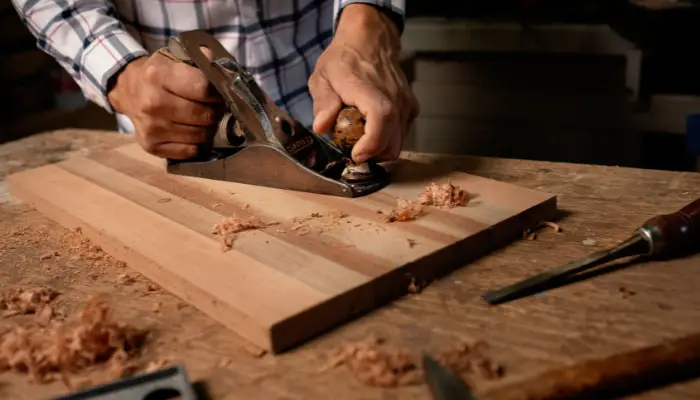
Wood shavings, those seemingly unremarkable remnants of woodworking craftsmanship, emerge as fascinating entities in their own right.
Generated during the meticulous shaping, carving, and refining of wood, each type of wood bequeaths its distinct character to the resulting shavings ranging from the delicate and fine to the robust and coarse.
Understanding the nuanced properties of various wood shavings is paramount for unlocking their full potential in an array of applications.
Environmental Benefits of Wood Shavings
Venturing beyond the conventional view of wood shavings as mere waste, it becomes evident that these unassuming remnants hold intrinsic environmental benefits.
Their innate biodegradability renders them a sustainable alternative to other materials, contributing significantly to the reduction of waste generated by woodworking processes.
This section seeks to illuminate the eco-friendly qualities of wood shavings, positioning them as a conscientious choice for those seeking sustainable solutions.
Agriculture and Gardening Wood Shaving Use
The utility of wood shavings extends seamlessly into the domain of gardening and agriculture, where they find purpose beyond the confines of the workshop.
As an exemplary mulching material, wood shavings play a pivotal role in enhancing soil conditions offering advantages such as moisture retention, weed suppression, and temperature regulation.
Additionally, their application as bedding material for animals, particularly in the context of poultry farming, underscores their versatility in promoting sustainable and efficient agricultural practices.
Crafts and Art
Related post: Sand mold off wood
Beneath the surface of discarded wood remnants lies an artistic potential waiting to be unleashed.
This section accentuates the creative possibilities inherent in wood shavings, showcasing how they can transcend their humble origins to become integral components of artistic expression.
From intricate sculptures to imaginative mixed media art and even serving as distinctive decorative elements, wood shavings can be transformed into captivating works of art.
The inclusion of examples from artists who have successfully integrated wood shavings into their creations further emphasizes the intersection of craftsmanship and creative ingenuity.
Uses in the Home That Are Practical
Beyond their traditional roles, wood shavings seamlessly integrate into various household applications, adding a touch of practicality to their repertoire.
This section illuminates their role as kindling for fires, providing a natural and aromatic alternative to commercial air fresheners.
The absorbent nature of wood shavings, adept at handling spills and odors, positions them as valuable assets in maintaining a clean and fresh living space.
Practical, sustainable, and versatile, their integration into everyday life showcases their usefulness as more than mere woodworking remnants.
DIY Projects and Woodworking
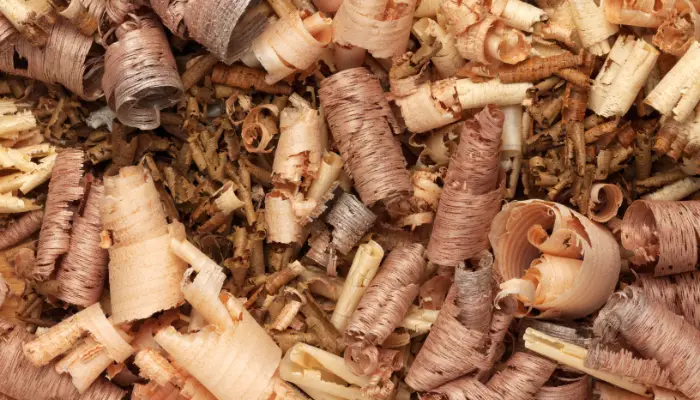
For the avid DIY enthusiast, wood shavings serve as a wellspring of inspiration waiting to be tapped into.
This section goes beyond mere inspiration, providing detailed instructions for a range of creative projects.
From crafting handmade paper to fashioning wood-filled ornaments and custom coasters, readers are encouraged to explore their own creative potential.
The aim is to not only showcase the myriad possibilities within wood shavings but also to convey the profound satisfaction derived from repurposing these remnants in inventive and practical ways.
Frequently Asked Questions On Wood Shaving Uses:
Q1: Are all wood shavings the same?
A1: No, the type of wood being worked on determines the characteristics of the shavings. Different woods yield shavings with varying textures, sizes, and qualities.
Q2: Can wood shavings be composted?
A2: Yes, wood shavings are excellent candidates for composting. Their natural composition makes them a valuable addition to compost piles, contributing to nutrient-rich soil.
Q3: Are wood shavings suitable for all types of gardening?
A3: Wood shavings, especially when used as mulch, are generally suitable for a variety of gardens. However, considerations should be made based on the specific needs of plants, as some may prefer different mulching materials.
Q4: Can wood shavings be used for animal bedding?
A4: Yes, wood shavings are commonly used as bedding material for animals, providing comfort and absorbency. However, it’s essential to choose untreated shavings to ensure the safety of the animals.
Q5: How can I incorporate wood shavings into my art projects?
A5: Wood shavings can be glued together to create unique textures, used as inclusions in sculptures, or applied as a surface treatment. The possibilities are vast, allowing for experimentation and creative expression.
Q6: Are wood shavings safe for kindling fires indoors?
A6: While wood shavings can be used as kindling, it’s crucial to exercise caution. Ensure they are dry and free from any chemical treatments. Use them in accordance with fire safety guidelines.

